Légkiegyenlítés:16 módszer a hideg és meleg foltok javítására, valamint az egyenletes hőmérséklet fenntartására

Az inkonzisztens hőmérséklet az igazi hangulattörő, különösen akkor, ha jó összeget költ energiaszámlákra, hogy fenntartsa ideális hőmérsékletét. Észreveheti, hogy otthonának egyes részei szaunának tűnnek, míg mások fagyosak. A hideg és meleg pontok miatt folyamatosan változtathatja a termosztát hőmérsékletét.
A hőmérséklet-ingadozások nagyon bosszantóak lehetnek, és a levegő kiegyensúlyozatlanságára utalhatnak. Előfordulhat, hogy az egyik szobában jó a légáramlás, míg egy másik szobában alig vagy egyáltalán nincs HVAC légáramlás. Ennek több oka is lehet. Néha a HVAC rendszer kibillenhet az egyensúlyából, és néha a szivárgó csatornák okolhatók.
Ez az energiaszámlák szükségtelen megugrásához is vezethet. Ebben az esetben a levegő kiegyensúlyozása segíthet.
Mi az a levegőkiegyenlítés?
A légkiegyenlítés egy olyan módszer, amely magában foglalja a HVAC egység beállítását úgy, hogy minden helyiség megfelelő mennyiségű kondicionált levegőt kapjon. Ez azt is magában foglalja, hogy olyan problémákat keressen, amelyek egyenetlen légáramlást vagy negatív légnyomást okoznak otthonában.
A légkiegyenlítő HVAC javítja a levegő keringését, növeli az egység hatékonyságát és csökkenti az AC költségeket.
Teljesen lehetséges, hogy saját maga kiegyensúlyozza otthoni hőmérsékletét; azonban a legjobb, ha szakembereket von be, ha a probléma nem oldódik meg. Ezt a kiterjedt útmutatót azért állítottuk össze, hogy segítsen megérteni az otthoni levegő kiegyensúlyozatlanságának okait, és a különféle lépéseket annak kijavítására.
Honnan tudhatja, hogy házának levegőkiegyenlítésre van szüksége?
Íme néhány jel, amelyek arra utalnak, hogy otthonában légáramlási problémák vannak:
Meleg és hideg helyek
Úgy érzi, hogy egyes szobák sokkal melegebbek vagy hidegebbek, mint a többiek? A két fokos eltérés nem nagy probléma, de ha az egyik területen tökéletesen meleg van, a másikon pedig fagy, akkor van egy probléma, amit orvosolni kell.
Magas energiaszámlák
Ha a fűtési vagy hűtési számlái minden látható ok nélkül tovább emelkednek, az a levegő egyensúlyának felborulására utalhat.
Gyenge légáramlás a szellőzőnyílásokból
Ha hidegnek érzi magát, akkor is gyenge légáramlást jelez, ha a termosztát magas hőmérsékleten van. Tegye a kezét a szellőzőnyílások alá, és ha úgy érzi, kevés vagy nincs levegő, lehet, hogy ki kell egyensúlyoznia a légkondicionáló szellőzőnyílásait.
Az otthoni hőmérsékleti egyensúlyhiány fő okai
Ahelyett, hogy felpörgetné a termosztátot, próbálja meg megtalálni az otthoni levegő kiegyensúlyozatlanságának fő okát, hogy a probléma mélyére jusson.
1. A termosztát nem ideális helyen található
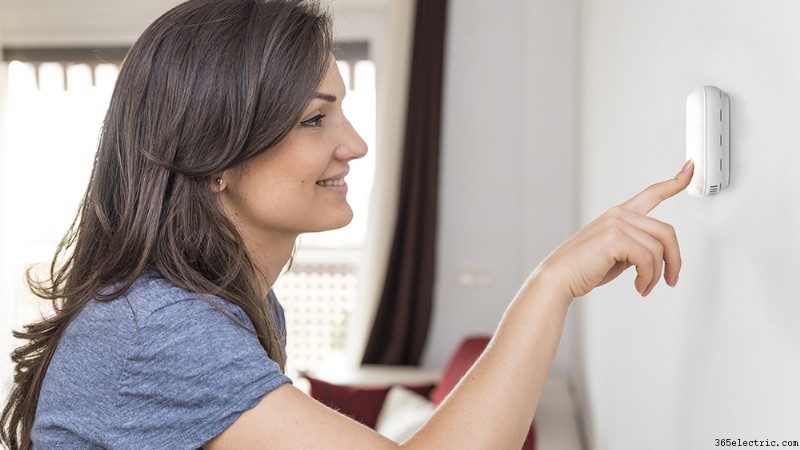
A termosztát nem megfelelő elhelyezése téves leolvasást eredményezhet, ami hozzájárul a hőmérséklet egyenetlenségéhez. Például, ha a termosztát egy sarki hálószobában vagy a konyha közelében van, csak az adott terület hőmérsékletét fogja leolvasni, és jelzi a HVAC-nak, hogy ennek megfelelően működjön. Miután otthonának ez a része elérte a beállított hőmérsékletet, a légkondicionáló rendszere kikapcsol, függetlenül a többi helyiség hőmérsékletétől.
2. Hőmérsékletkülönbség a padlók között
Ahogy emelkedik a hő, a második emelet melegebb lesz, mint az első emelet. Ez hőmérsékleti egyensúlyhiányt hoz létre otthona két emelete között. Ezen túlmenően, ha egyetlen termosztátot használ mindkét emelet felügyeletére, ez növelheti az egyensúlyhiányt.
3. Rossz otthoni szigetelés
Ha otthona nincs megfelelően szigetelve, a huzatos területek lehetetlenné teszik otthona fűtését vagy hűtését.
A meleg levegő felfelé áramlik, így ha a tetőtérben nincs szigetelés, télen hideget érezhet otthonában. Egyéb otthoni szigetelési problémák, amelyek egyenetlen hőmérsékletet okozhatnak, többek között a huzatos ablakok, ajtók és az elhasználódott külső falszigetelés.
4. Szivárgó csatorna
A kis szivárgások és rések nem tűnnek nagy problémának, de jelentősen megváltoztathatják otthona hőmérsékleti egyensúlyát. Szivárgó csatornák esetén a felmelegedett vagy lehűtött levegő a repedéseken keresztül távozik, ami ingadozó hőmérsékletet eredményez az egész házban.
5. Nem megfelelő méretű HVAC egység vagy légcsatorna
A túlméretezett HVAC egység folyamatosan rövid ideig tart, ami azt jelenti, hogy nem lesz elég sokáig bekapcsolva ahhoz, hogy megfelelően fűtse vagy hűtse a helyiséget. Másrészt egy alulméretezett egységnek extra kemény munkát kell végeznie a beállított hőmérséklet elérése érdekében, ami fokozott kopáshoz és elhasználódáshoz vezet.
A nagy légcsatorna nem tartja fenn a megfelelő nyomást, ami gyenge légáramlást eredményez. Hasonlóképpen, ha a szükségesnél kisebb a légcsatornája, az nem fogja egyenletesen elosztani a levegőt a házában.
6. A szobák elhelyezkedése
A délen elhelyezkedő szobákat napközben több közvetlen napfény éri, így meglehetősen melegek az északi oldalakhoz képest. A nap melege egyenetlen hőmérsékletet is eredményez otthonában.
16 módszer a meleg és hideg foltok kijavítására otthonában

A szellőzőnyílások beállításától a légszivárgás tömítéséig 16 módszert mutatunk be, amellyel kijavíthatja otthonában a hőmérséklet-ingadozásokat.
1. Próbálja ki a Kétfokozatú módszer
etA kétszintes épület hőmérsékletének kiegyenlítéséhez kipróbálhatja a kétfokos módszert. Állítsa a felső részét 2 fokkal alacsonyabb hőmérsékletre, mint az első emeleten. Például, ha az első emelet 70 F, a második emeleten 68 F legyen. Ez segít elérni a kívánt hőmérsékletet mindkét emeleten.
2. Állítsa be a szellőzőnyílásokat a levegőkiegyenlítéshez
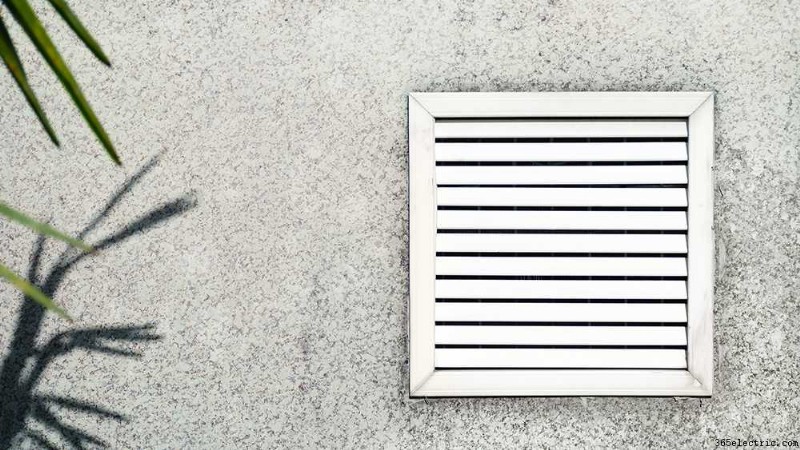
A HVAC levegő kiegyensúlyozása a szezon elején szükséges a meleg és hideg pontok kezelésére. Nyár elején és télen módosítania kell, hogy megtalálja a legjobbat a kényelmének.
Nyár
- Állítsa be a termosztátot 76-78 F-ra. Csak a légáramlás tesztelésére és kiegyensúlyozására szolgál, mivel lehetővé teszi a meleg és hideg foltok eltávolításához szükséges változtatások elvégzését.
- Hagyja ezen a beállításon 24 órán át.
- A túl hidegnek érzett helyeken állítsa be a fali és mennyezeti szellőzőnyílásokat. Ez segít a hidegebb levegő újraelosztásában a melegebb területeken.
- 24 óra elteltével ellenőrizze újra ezeket a területeket. Ha kényelmesnek érzi magát, nincs szükség további változtatásokra. De ha a szobák még mindig melegnek érzik magukat, folytassa a szellőzőnyílások beállítását, amíg el nem éri a kívánt hőmérsékletet.
- Amint a hideg levegő lesüllyed, nyissa ki a szellőzőnyílásokat a felső emeleten, és zárja be azokat az első emeleten és a pincében.
Tél
- Állítsa be a termosztátot 76-78 F közé. 24 óra elteltével ellenőrizze újra, és végezze el a szükséges szellőzőbeállításokat a fent leírtak szerint.
- Ahogy a hő felfelé emelkedik, a fűtési rendszerből származó összes meleg a felső emeleteken összegyűlik, hideg foltokat hozva létre az első emeleten. So, you will have to close the vents upstairs and in the open hall areas.
3. Clean Your Air Filters
Air filters help remove dust and contaminants, circulating fresh air in your home. However, they require regular cleaning; otherwise, they could get clogged. Dirty air filters result in weak airflow and hot, cold spots in your home.
Clean your air filters every two weeks and change them every 3-4 months for better air cleaning.
Constantly keeping a check on AC filters can be a hassle. Use a smart thermostat or smart AC controller that sends notifications to monitor cleanliness levels.
4. Choose the Best Thermostat Location
The thermostat takes average temperature readings, so ideally, it should be placed at a central location in your home. Moreover, the room you frequently use also makes a good placement area. For example, if you have a two-story building, a central location on the first floor is recommended.
Electronic equipment creates a lot of heat which can affect your thermostat reading. Keep your thermostat away from heat-generating appliances such as ovens, television, lamps, etc. Also, do not place the thermostat near doors and windows as cold drafts can affect the temperature measurements.
5. Remove Vent Blockages
If you feel little to no air blowing from your HVAC unit, something might be blocking your air vents. Check if any furniture is placed in front of the vents and relocate it. If you have no other place to put your furniture, you can get a magnetic air deflector to blow the air away from the obstruction and toward the center of the room.
6. Go for HVAC Zoning
HVAC zoning creates various clusters in your home. It allows you to set the temperature for each zone and make necessary adjustments without disturbing the whole house’s temperature. You can create and control each zone via a smart thermostat or smart AC controller.
Dual or multi-zoning helps to reduce hot and cold spots and prevent thermostat war in your home. A win-win situation!
7. Check for Drafts
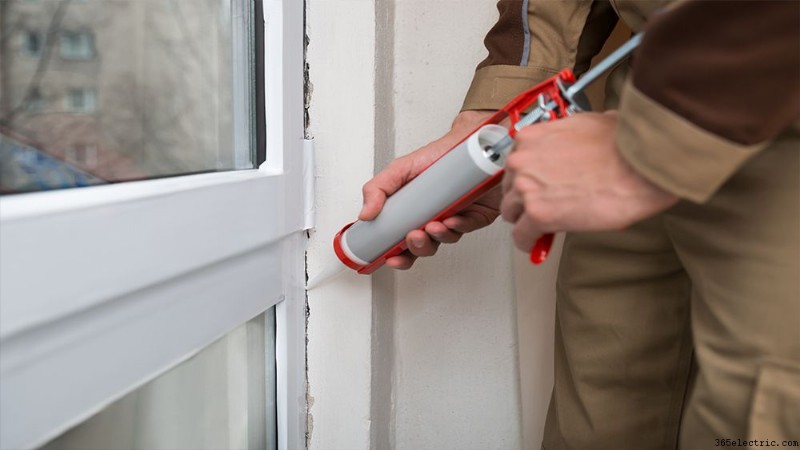
In the winter season, drafty air seeping in from leaks and gaps can affect your cozy home environment. In summer, the cold air from your HVAC can leak out, creating hold and cold spots.
After finding air leaks in your doors, windows, and exterior walls, use caulking to seal them properly. In winter, your home could lose up to 85% of the heat through the holes and gaps in the attic. Therefore, insulating your attic is also important to prevent drafts.
8. Adjust Blower Fan Speed
To balance air pressure in your house, adjusting the blower fan speed can be beneficial.
In winter, adjust it to a lower speed as it helps to reduce airborne allergens and alter home humidity levels. In summer, you can turn the fan speed back to high.
To adjust the fan speed, follow these steps:
- Locate the air handler electrical disconnect box and turn off the switch.
- Remove the air handler cover and find the fan motor.
- Identify speed wires with the help of color-coding. Different manufactures use different colors, so refer to your user manual for that.
- Change the active speed wire, depending on the season.
- Run your HVAC system to test the speed. You will be able to feel the difference in the fan speed.
9. Install Window Covering
Direct sunlight entering through the window can significantly alter your room temperature in summer. Also, 30% of heat energy is lost through windows in the colder months. This puts pressure on your HVAC system, which in turn affects the air balance in your home.
Use curtains, blinds, or drape hangings to minimize heat loss and gain. You can also install window film insulation to protect against glare and ultraviolet exposure.
10. Install Sufficient Number of Return Air Ducts
To maintain neutral air pressure in your home, your ductwork needs to supply and return the same volume of air. Ideally, you should have both types of vents running to each room; however, older duct systems often have one central return vent, which is insufficient for the whole house.
Return air ducts are important as they help maintain the consistent temperature and airflow in your home. Using these ducts, the air is returned back to the system so it can be heated or cooled again, filtered contaminants, and redistributed inside your home.
11. Fix Leaky Ducts
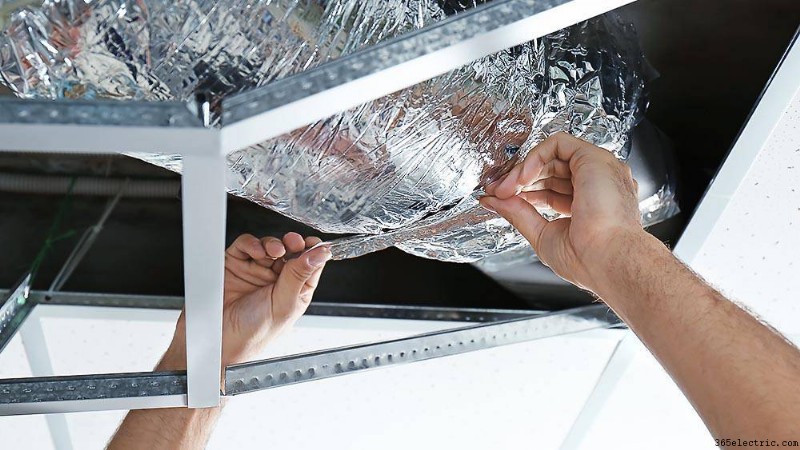
The leaks and gaps in your ductwork interfere with proper air distribution in your home. To fix that, insulate your ductwork. First, apply duct sealant on the holes and gaps using a paintbrush. After that, wrap fiberglass insulation around the ducts and seal them with foil tape.
12. Choose Right Size Air Conditioning Unit
If you can’t think of any other issue that could be causing uneven home temperature, AC sizing could be a culprit. A wrong-sized air conditioner increases wear and tear, causing weak airflow. So, choosing the perfect size of an air conditioner is important to balance the home temperature.
If you suspect your HVAC isn’t the correct size, go for a professional evaluation to determine the right size of air conditioner for your home.
13. Adjust HVAC Dampers
Your HVAC supply ducts have dampers that are controlled by the levers outside of the duct. They open or close a metal disk found inside a supply line.
For maximum airflow in your room, rotate the lever so that the metal disk remains flat. When the disc remains upright, it blocks the airflow, so keep the direction of the disc in mind.
14. Use Two Air Handlers for a 2-Story Building
The upper floor retains more heat than the downstairs in a two-story building. If you use only one unit, it can get difficult to maintain the same temperature on both stories.
In this scenario, opt for a separate air handler for each floor to maintain a comfortable temperature throughout your house.
If your AC is not cooling upstairs, check this guide.
15. Use Ceiling Fans to Balance Air Pressure
Using ceiling fans both in summer and winter can help improve air circulation. Fans help mix hot and cold air, making rooms more comfortable.
In winter, the fan direction should be clockwise to blow the air upwards. In the summertime, your ceiling fan’s direction should be counterclockwise for cooling. When the fan rotates in this direction, it forces the air to move downward and helps balance air pressure in your house.
16. Set Your Fan to ‘On’
You can set your HVAC unit’s fan on the thermostat to ‘auto’ or ‘on’ settings. The fan will shut off in the auto settings once your home has achieved the desired setting. When the fan is set to ‘on,’ it will continuously run regardless of your home temperature.
The advantage of the second option is that air constantly circulates in your home, which means you are less likely to encounter hot or cold spots.
What Does Professional Air Balance Testing Entail?
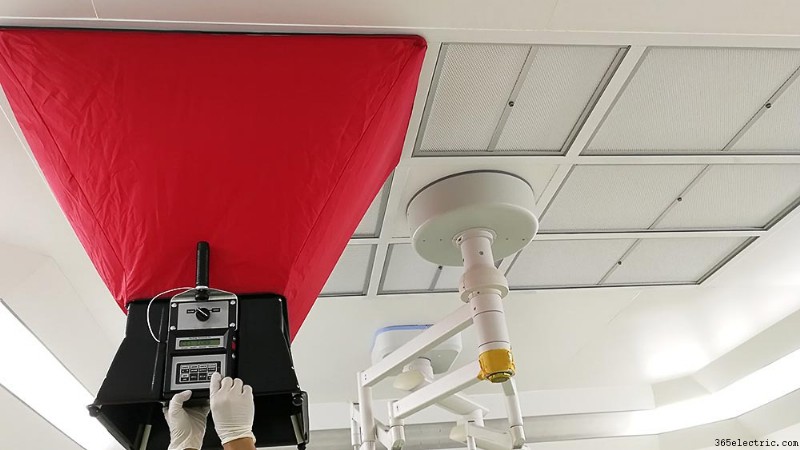
An HVAC professional will take various measurements and perform tests to determine what’s causing air imbalance in your home. Data from these tests will be used to create a report outlining your system’s performance.
Professionals use manometers to measure air pressure and pinpoint any blockages. Hygrometers are used to check humidity levels and see whether any place feels suffocated due to high moisture levels.
After getting all the results, HVAC technicians may adjust the dampers and fan speed and replace supply lines with larger or smaller ductwork. They may even install dampers if you didn’t have them installed previously.
Advantages of Air Balancing
Air balancing HVAC increases your comfort level, improves indoor air quality, and lowers your electricity bills.
· Improved Energy Efficiency
Improper airflow will force your system to work much harder than it has to achieve your desired temperature. When your system works hard for long periods, it draws more energy, resulting in increased costs. A balanced airflow system ensures that your system does not work overtime, saving energy.
· Better Indoor Air Quality
Low air circulation causes indoor air pollutants such as mold or dust particles to build up inside your home. A balanced airflow allows the fresh air to enter your home while removing stale air.
· Longer Lifespan of HVAC Unit
When your system works overtime due to uneven home temperature, it leads to unnecessary wear or tears. Proper airflow in your home ensures that your system works smoothly, increasing its lifespan.
· Low Energy Bills
When the temperature in one area of your home does not feel right, it can be tempting to crank up your thermostat. However, it can result in energy wastage as other areas may not need a temperature change. When the temperature in your entire house is balanced, you won’t feel the need to change the thermostat settings constantly. This will help you save on energy and lower your bills.
· Enhanced Comfort
Constant temperature fluctuations affect your comfort level. Air balancing is designed to target uneven temperature spots to improve your comfort.
Air balancing ensures that an equal amount of air moves continuously throughout your entire home. If you notice an imbalance, take the time to get it fixed, either professionally or yourself, to ensure a comfortable atmosphere at all times.
-
Az irodai légkondicionálás és a termelékenység – összefüggenek?
-
Felemelkedik a meleg levegő, leszáll a hideg levegő:az otthoni klímára gyakorolt hatás és mit tehetsz ellene
-
Különböző típusú termosztátok és az Önnek legmegfelelőbb
-
Légkiegyenlítés:16 módszer a hideg és meleg foltok javítására, valamint az egyenletes hőmérséklet fenntartására
